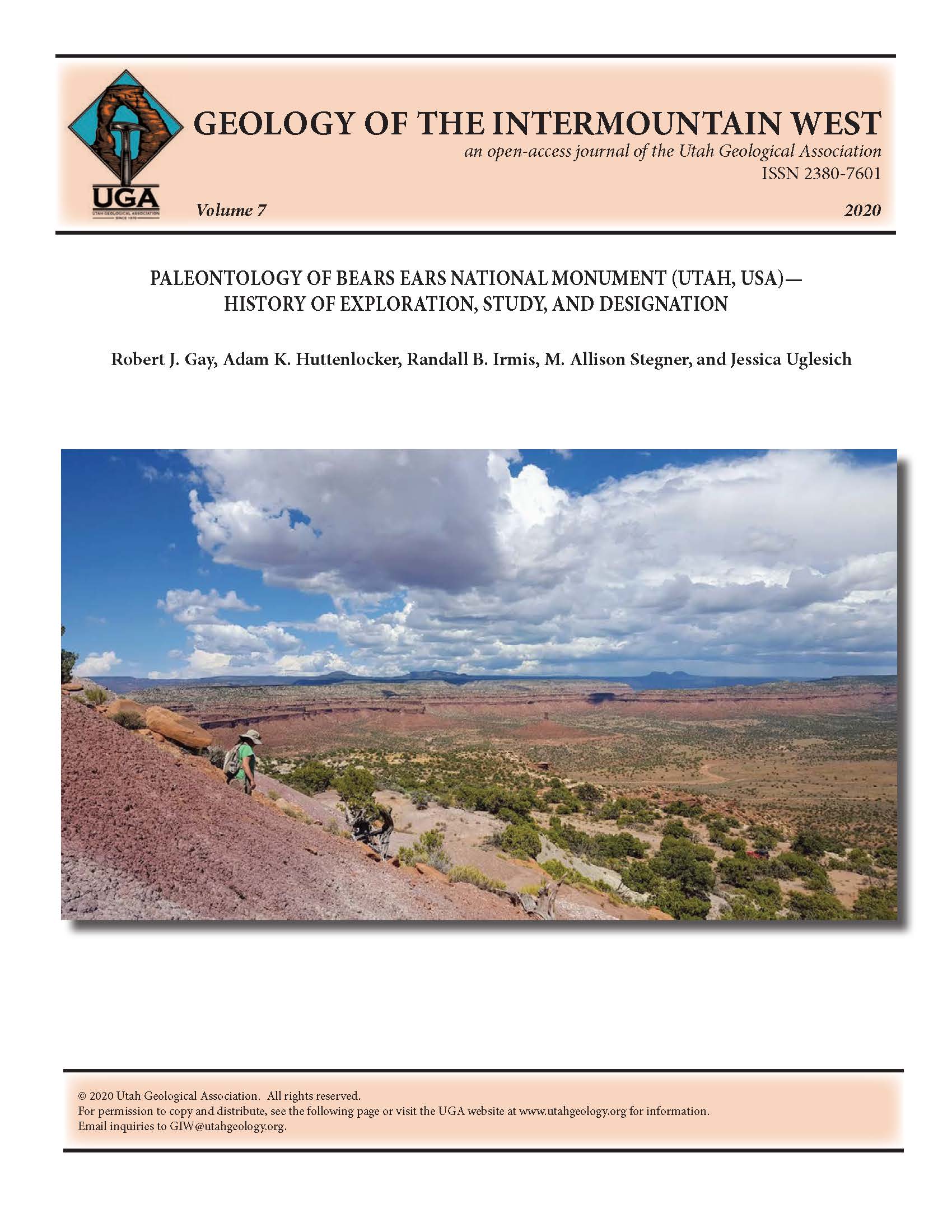Paleontology of Bears Ears National Monument (Utah, USA)
History of exploration, study, and designation
Abstract
Bears Ears National Monument (BENM) is a new landscape-scale national monument in southeastern Utah, jointly administered by the Bureau of Land Management and the U.S. Forest Service as part of the National Conservation Lands system. As initially designated in 2016, BENM encompassed 1.3 million acres of land with exceptionally fossiliferous rock units. Subsequently, in December 2017, presidential action reduced BENM to two smaller management units (Indian Creek and Shash Jáá). Although the paleontological resources of BENM are extensive and abundant, they have historically been under-studied. Herein we summarize prior paleontological work within the original BENM boundaries to provide a more comprehensive picture of the known paleontological resources, which are used to support paleontological resource protection. The fossil-bearing units in BENM comprise a nearly continuous depositional record from aproximately the Middle Pennsylvanian Period (about 310 Ma) through the middle of the Cretaceous Period (about 115 Ma). Pleistocene and Holocene deposits are known from unconsolidated fluvial terraces and cave deposits. The fossil record from BENM provides unique insights into several important paleontological intervals of time including the Carboniferous-Permian icehouse-greenhouse transition and evolution of fully terrestrial tetrapods, the rise of the dinosaurs following the end-Triassic mass extinction,and the response of ecosystems in dry climates to sudden temperature increases at the end of the last glacial maximum.





